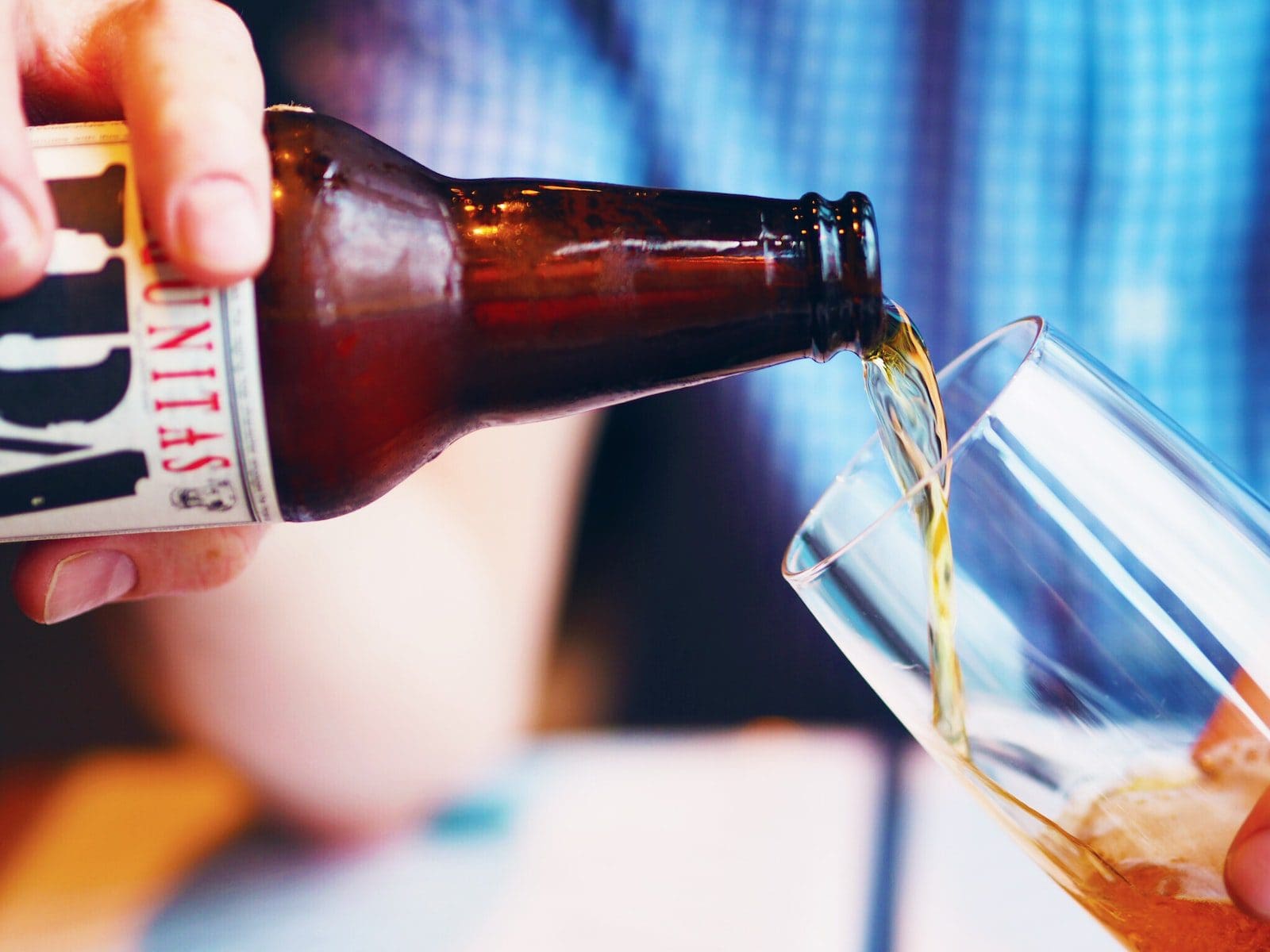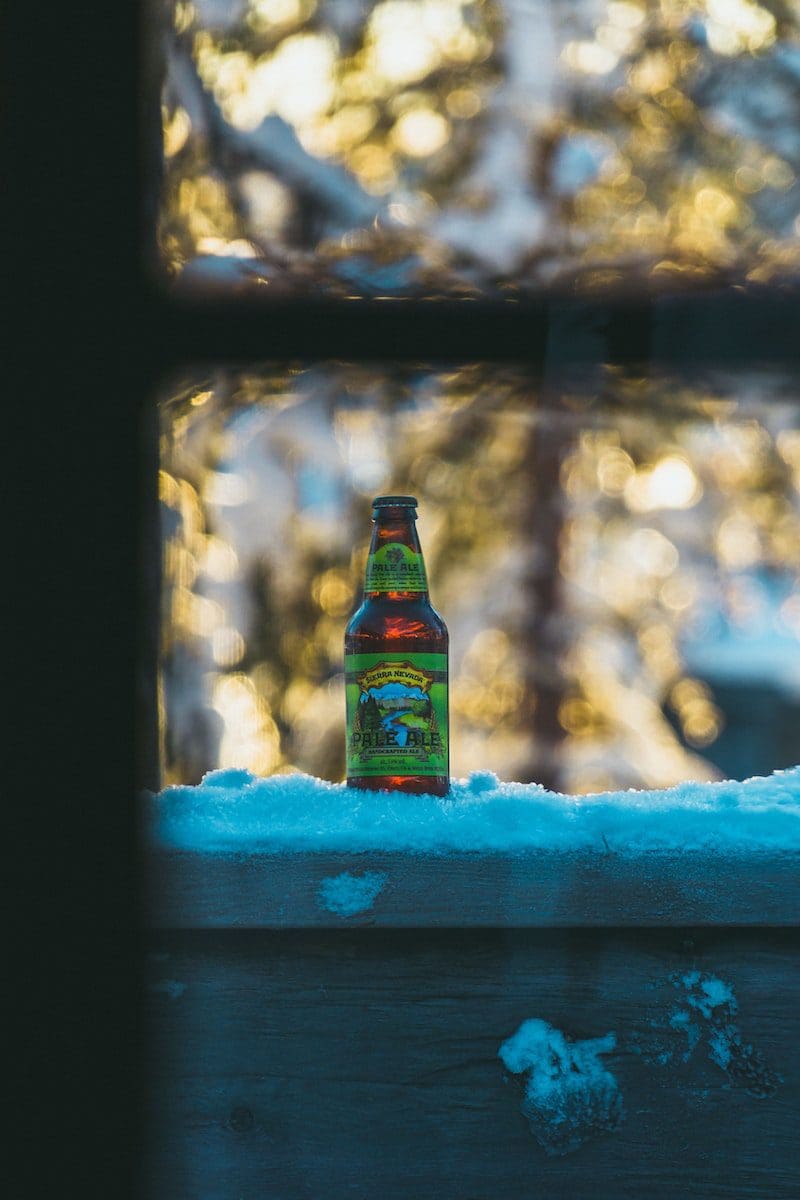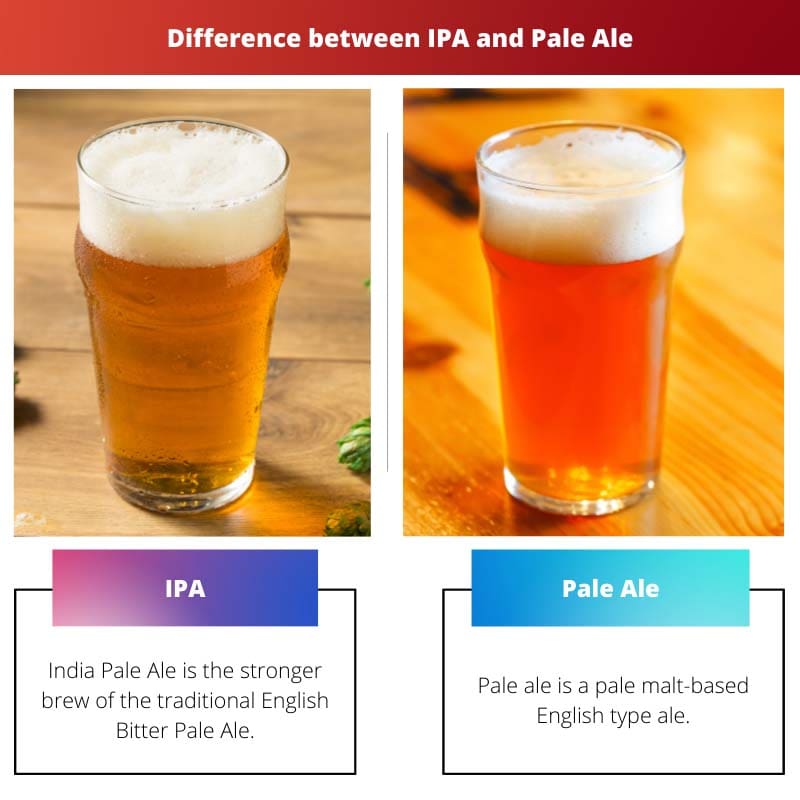Beer varieties are terms that are used to define and identify beers based on their provenance, flavour, colour, combination, intensity, and manner of manufacture.
The first beer types emerged in Europe, but various kinds have since emerged worldwide. What sort of beer may be made accessible in a given place is determined by the quality, weather, groundwater profile, and availability of ingredients.
Pale ale and IPA are among the most popular beer types worldwide.
The Pale Ale and India Pale Ale surely create confusion due to their similar names and characteristics, so this article aims to clear out the confusion by comparing these fine drinks side-by-side.
Key Takeaways
- IPAs have a more intense hop flavor and aroma than Pale Ales, resulting in a stronger bitterness.
- Pale Ales are more balanced in malt and hop flavors, offering a smoother taste.
- IPAs contain a higher alcohol content than Pale Ales, making them more potent.
IPA vs Pale Ale
Indian Pale Ale (IPA) is a hoppy beer made with strong, bitter and fruity flavours. It is a golden coloured beer with higher alcohol by volume content. Pale ale is a malty flavoured beer with low to medium flavour profile intensity. It is amber in colour with lower maltiness and alcohol content.

IPA, also known as India Pale Ale, is the stronger brew of the traditional English Bitter Pale Ale. The India pale ale (IPA) is funkier than other pale ales.
Varietals are an important element in all ales, but IPAs use many of them during production.
Chinook, Centenary, and Cascade hops are popular in IPAs, and many brewers explore with additional varietals, frequently in unique combinations. Brewers frequently use pale malt. However, some use crystal, Vienna, or Munich malts as well.
Pale ales, in general, are pretty famous throughout the world. Pale ale is the name given to a beer brewed from malt-burnt coke. The word “beer style” was first seen in 1642, but it wasn’t until 1703 that the name “beer fashion” was coined.
The changes in this beer style’s procedures and hop levels resulted in a diversity of this type of beer. For example, the Organization of Brewers in the United States defines American Pale Ale as a kind of ale.
The body of this brown ale is medium, and the maltiness is low to intermediate.
Comparison Table
| Parameters of Comparison | IPA | Pale Ale |
|---|---|---|
| Definition | India Pale Ale is the stronger brew of the traditional English Bitter Pale Ale. | Pale ale is a pale malt-based English-type ale. |
| Taste | Sweet and harsh, but when an IPA’s fragrance and golden colour are combined, you get tastes like citrus, oak, and flowers. | Pale ales are session beers that are fruity, crisp, and copper in colour. They’re packed yet don’t have an overwhelming hops flavour. |
| Maltiness | More maltier than pale ales. | Less maltier compared to IPA. |
| Intensity | Higher intensity because of stronger brews. | Lower intensity and lower alcohol content too. |
| Origin | The IPA was created in the United Kingdom. | Pale ale is the name given to a beer brewed from malt-burnt coke. |
What is IPA?
IPA, known as Indian Pale Ale, falls under the English Bitter taste category. In 1840, the word was coined in England.
One of the most distinctive characteristics of an IPA is that it is heavily hopped and has a more intense strength than an English pale ale, and Indian consumers like it.
IPAs have progressed since their inception. The predominant taste of an IPA, as it was in 1829, derives from the hops used throughout the brew. The hop variety can provide a citrus, fruity, or herbaceous flavour to the beer.
With the rise of good beer, IPAs have evolved into various styles, including Britain, West Side, New American, Juicy, and others. Sága IPA, Slugfest Fruity IPA, and Victorious Session IPA are all available year-round during Summit Brewing Company.
The one thing that all of these beers have in common is that they all have a tinge of fruity or citrusy flavour with a strong hop taste. Whereas the latter might be heavier and stronger than the other at times, the brew nearly always has a smooth texture.
India pale ales have a distinct flavour profile. There aren’t many beers that have the perfect balance of sweetness and hops. IPAs, like their sibling, the pale ale, is harsher and hoppier. Festive varieties will be available at several small and craft brewers.
Changes in the processes and hop amounts used in this beer style led to various flavours. American Pale Ale, Brown pale ale, and even Indian pale ale are types of ale, according to the Association of Brewers in the United States.

What is Pale Ale?
Pale ale is a commonly consumed beer style with a rich flavour, a yellow to amber hue, and medium strength. Pale ales are a cross between dark brews and light pilsners, brewed with pale grain and ale bacteria.
The pale ale was first used in England in 1703 to describe beers brewed with coke, a refined type of coal that produces an auburn or cerium-coloured ale.
Though the word “pale ale” now encompasses a wide range of beer types, including IPAs, bottles labelled as pale ales tend to be on the softer, livelier end of the scale.
They’re flavorful but not overpowering, making the style highly approachable. The first pale ales were brewed in England, as well as the style that launched the craft beer movement in the United States.
Malty English beers, smooth Us brews, Belgium leisure ales, and hops IPAs are all part of the category. Most pale ales are better served chilled, around 50 and 60 degrees F.
Some IPAs and British pale ales benefit from a slight chill, which is not below 45°F, though. As a rule of thumb, the stronger the beer, the more hops it contains.

Main Differences Between IPA and Pale Ale
- IPA is stronger in intensity when compared to classic or English Pale Ale.
- IPA has a sweet yet bitter flavour with considerable alcohol, whereas Pale Ale has a bitter and malty flavour with less alcohol content.
- IPA is preferred by Indian consumers, whereas Americans and Europeans prefer pale ale.
- IPA or India Pale Ale is a variation of Pale Ale, but vice versa is not valid.
- IPA originated in Britain when the British sailors were heading to the Indian colony, whereas Pale Ale was made in London by George Hogeson from Bow Brewery.




